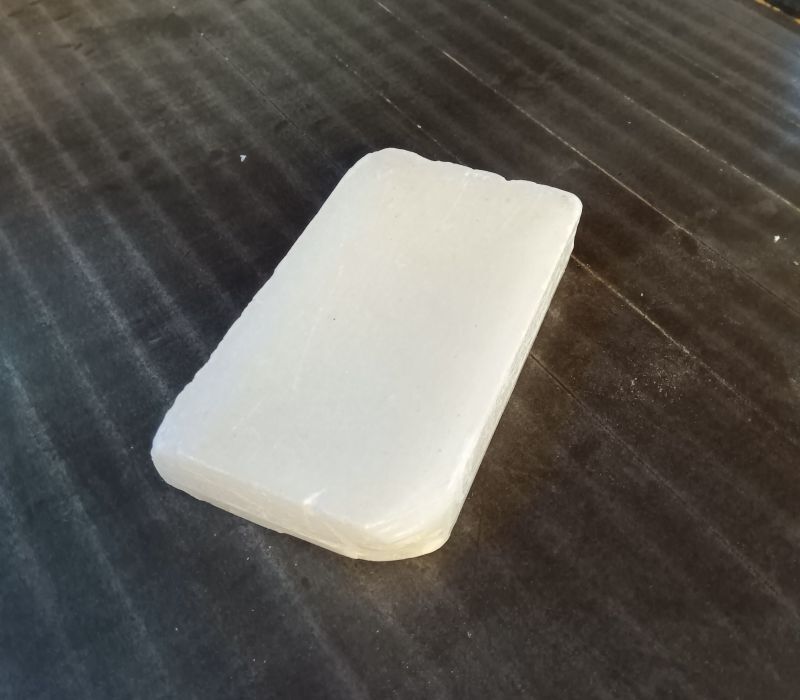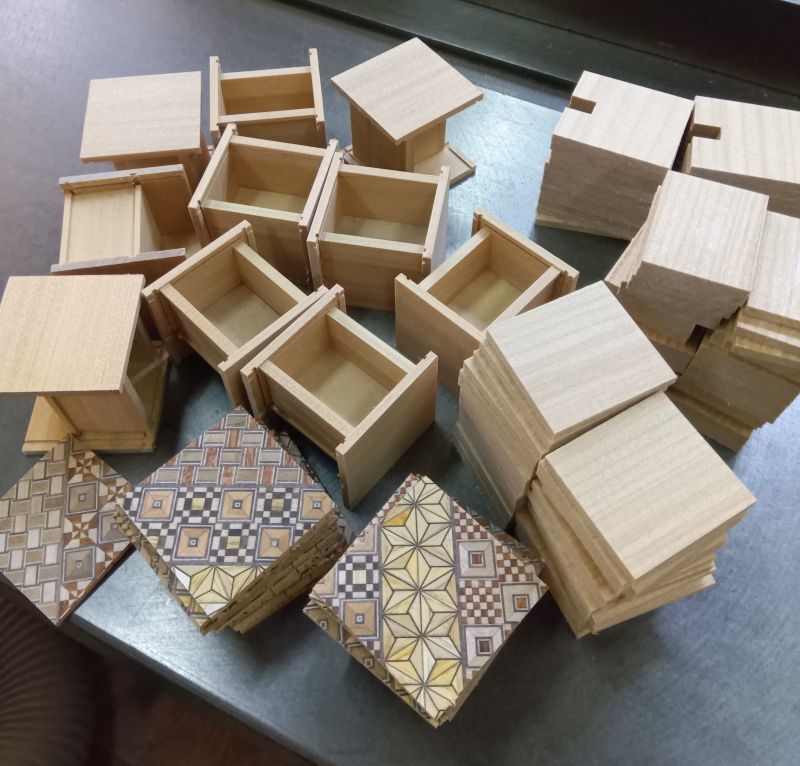Finish coating 4
Continuing from yesterday...
What is the method that craftsmen of the past used to paint Japanese puzzle boxes? It is "wax coating". In Japanese, it is called "rōbiki". Is this method used overseas as well? Currently, wax coating is not used on Japanese puzzle boxes, but it is used on products such as paper, string, and envelopes that are sold. "Wax coating" involves melting wax and applying it like paint to the material, allowing it to soak in. This process strengthens the product, protects it from water, and enhances its appearance with a beautiful sheen. It is also said that the thread used for sewing leather products (leather stitching thread) becomes stronger and less likely to unravel.
According to the story of an elderly craftsman I worked with, "rōbiki" was commonly used during his apprenticeship. They believed that finish painting puzzle boxes would cause the mechanisms to stick together (refer to yesterday's blog post), so they used "rōbiki" to coat the puzzle boxes instead. This not only protected the surface of the boxes but also allowed the wax to seep into the joints of the box parts, improving the movement of the mechanisms. (How fascinating!)
The method of applying wax to puzzle boxes did not involve melting the wax and painting it on. Instead, the melted wax was soaked into a cloth and then rubbed onto the box. This process required a lot of physical strength, and the elderly craftsman said that many craftsmen would be drenched in sweat while performing this task. The photo is not wax blocks for rōbiki (there are various kinds), but we use similar wax blocks, melting them for the process.
Unfortunately, I have never performed or witnessed this process myself. However, I have seen and held a wax-coated box. It had a very charming finish, with the warmth of handmade craftsmanship, embodying the essence of Japanese traditional craft!
Today, I'm making the 2 sun cube 4 steps drawer puzzle box (photo). I was making this box last week as well, but now I'm making it again due to a request from the Hakone, Japan market. This is my first time shipping this puzzle box to the Hakone market. For this box, the top and bottom panels feature the usual Yosegi-zaiku, but the side panels have a unique pattern. This design is original to the Hakone market. I can't show it here, but you might come across it in stores around Hakone. Please look forward to it!
What is the method that craftsmen of the past used to paint Japanese puzzle boxes? It is "wax coating". In Japanese, it is called "rōbiki". Is this method used overseas as well? Currently, wax coating is not used on Japanese puzzle boxes, but it is used on products such as paper, string, and envelopes that are sold. "Wax coating" involves melting wax and applying it like paint to the material, allowing it to soak in. This process strengthens the product, protects it from water, and enhances its appearance with a beautiful sheen. It is also said that the thread used for sewing leather products (leather stitching thread) becomes stronger and less likely to unravel.
According to the story of an elderly craftsman I worked with, "rōbiki" was commonly used during his apprenticeship. They believed that finish painting puzzle boxes would cause the mechanisms to stick together (refer to yesterday's blog post), so they used "rōbiki" to coat the puzzle boxes instead. This not only protected the surface of the boxes but also allowed the wax to seep into the joints of the box parts, improving the movement of the mechanisms. (How fascinating!)
The method of applying wax to puzzle boxes did not involve melting the wax and painting it on. Instead, the melted wax was soaked into a cloth and then rubbed onto the box. This process required a lot of physical strength, and the elderly craftsman said that many craftsmen would be drenched in sweat while performing this task. The photo is not wax blocks for rōbiki (there are various kinds), but we use similar wax blocks, melting them for the process.
Unfortunately, I have never performed or witnessed this process myself. However, I have seen and held a wax-coated box. It had a very charming finish, with the warmth of handmade craftsmanship, embodying the essence of Japanese traditional craft!
Today, I'm making the 2 sun cube 4 steps drawer puzzle box (photo). I was making this box last week as well, but now I'm making it again due to a request from the Hakone, Japan market. This is my first time shipping this puzzle box to the Hakone market. For this box, the top and bottom panels feature the usual Yosegi-zaiku, but the side panels have a unique pattern. This design is original to the Hakone market. I can't show it here, but you might come across it in stores around Hakone. Please look forward to it!

